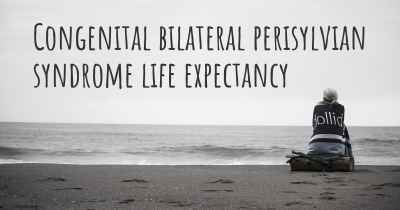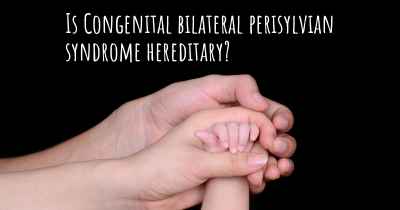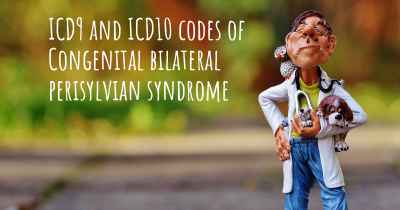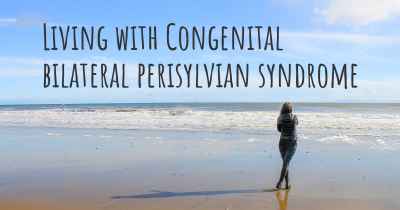Can people with Congenital bilateral perisylvian syndrome work? What kind of work can they perform?
See how people with experience in Congenital bilateral perisylvian syndrome give their opinion about whether people with Congenital bilateral perisylvian syndrome can work and what kind of jobs are more appropriated for people with Congenital bilateral perisylvian syndrome
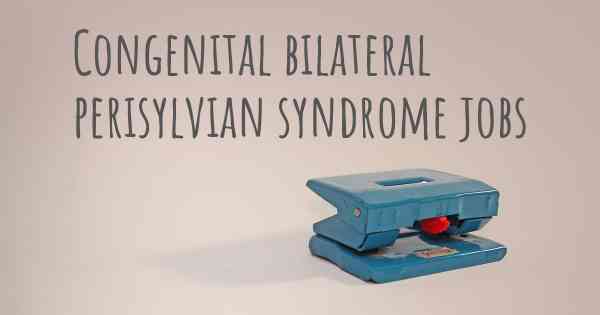
Can people with Congenital bilateral perisylvian syndrome work?
Congenital bilateral perisylvian syndrome (CBPS) is a rare neurological disorder that affects the development of the brain. It is characterized by structural abnormalities in the perisylvian region, which is responsible for language and motor functions. Individuals with CBPS often experience difficulties with speech and language, as well as motor skills.
While CBPS can present significant challenges, it does not necessarily mean that individuals with this condition cannot work. The ability to work will depend on the severity of the symptoms and the individual's overall cognitive and physical abilities.
Employment Opportunities for Individuals with CBPS
Individuals with CBPS may have unique strengths and abilities that can be utilized in various work settings. It is important to focus on their strengths and provide accommodations or modifications to help them succeed in the workplace. Here are some potential employment opportunities for individuals with CBPS:
- Assistive Technology Specialists: Individuals with CBPS often have a deep understanding of assistive technologies due to their own experiences with communication and motor difficulties. They can work as specialists, helping others with disabilities to navigate and utilize assistive devices effectively.
- Advocacy and Support: Individuals with CBPS can work in advocacy and support roles, helping others with disabilities to access resources, navigate systems, and understand their rights. They can provide valuable insights and support based on their own experiences.
- Art and Design: Many individuals with CBPS have a strong creative side and excel in art and design. They can work as artists, graphic designers, or in other creative fields where their unique perspectives and talents can be showcased.
- Writing and Communication: Despite challenges with speech and language, individuals with CBPS can have excellent written communication skills. They can work as writers, editors, or in other roles that require strong written communication abilities.
- Research and Analysis: Individuals with CBPS often have a keen eye for detail and a strong ability to analyze information. They can work in research and analysis roles, contributing to scientific studies, data analysis, or market research.
- Education and Teaching: Some individuals with CBPS may have a passion for education and teaching. With appropriate accommodations and support, they can work as teachers or educators, sharing their knowledge and experiences with others.
- Entrepreneurship: Individuals with CBPS can explore entrepreneurship and start their own businesses. They can leverage their unique perspectives and talents to create innovative solutions or products that cater to specific needs.
Accommodations and Support in the Workplace
For individuals with CBPS to succeed in the workplace, it is crucial to provide appropriate accommodations and support. Some accommodations that can be helpful include:
- Assistive Technology: Providing access to assistive devices, such as speech-to-text software, communication boards, or adaptive keyboards, can greatly enhance communication and productivity.
- Flexible Work Arrangements: Offering flexible work hours or remote work options can help individuals with CBPS manage their energy levels and reduce the impact of fatigue or physical limitations.
- Communication Support: Implementing strategies like visual aids, written instructions, or alternative communication methods can facilitate effective communication in the workplace.
- Physical Accommodations: Modifying workstations or providing ergonomic equipment can assist individuals with motor difficulties in performing their tasks comfortably and efficiently.
- Training and Education: Providing training and education to colleagues and supervisors about CBPS and its impact can foster understanding, empathy, and a supportive work environment.
Conclusion
While individuals with Congenital bilateral perisylvian syndrome may face challenges in the workplace, they can still pursue meaningful and fulfilling careers. By focusing on their strengths, providing appropriate accommodations, and fostering a supportive work environment, individuals with CBPS can contribute their unique talents and perspectives to various industries and professions.
Posted Aug 20, 2017 by Momof2miracles Jess Sundquist 4256
